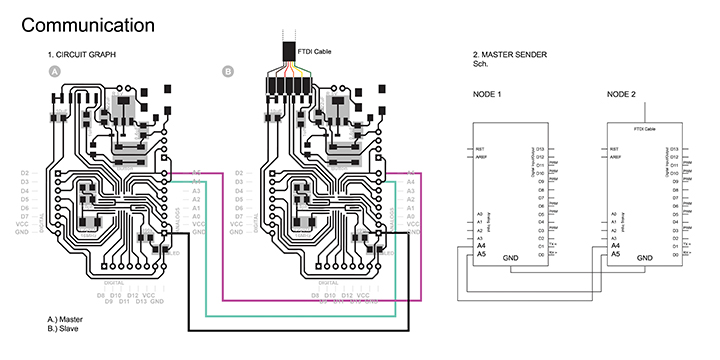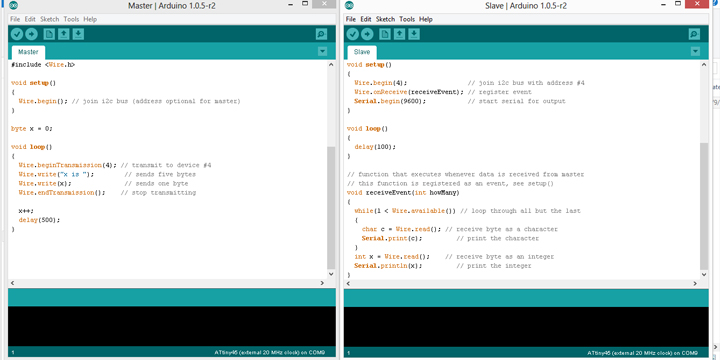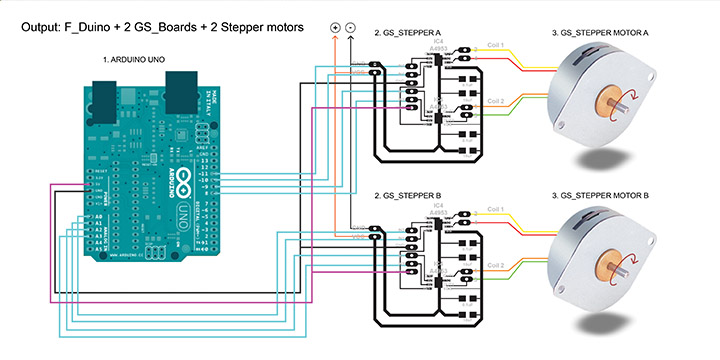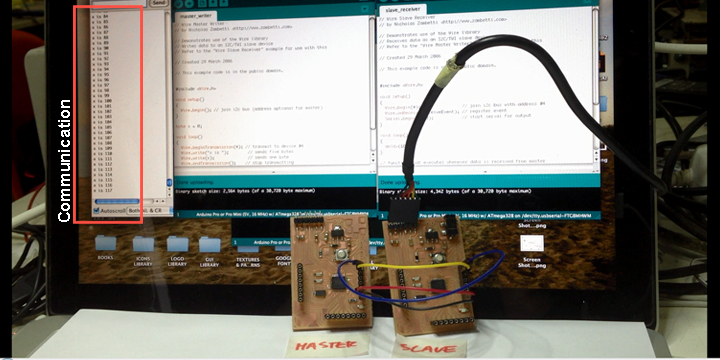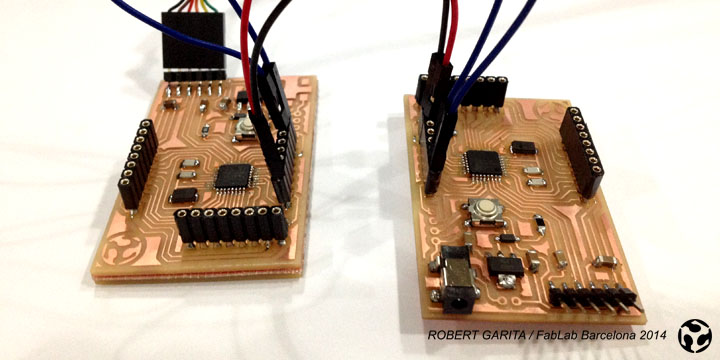
Networking and Communications

Master Writer/Slave Receiver Sometimes, the folks in charge just don't know when to shut up! In some situations, it can be helpful to set up two (or more!) boards to share information with each other. In this example, Im using my two F_Duinos. Each F_Duino is programmed to communicate with one another in a Master Writer/Slave Receiver configuration via the I2C synchronous serial protocol. Several functions of Arduino's Wire Library are used to accomplish this. F_Duino 1, the Master, is programmed to send 6 bytes of data every half second to a uniquely addressed Slave F_Duino . Once that message is received, it can then be viewed in the Slave F_Duino's serial window.
Fab Academy Barcelona Class No.14
Assignament: Networking and Communications
By Robert Garita
Machines:
-Roland Modela MDX-20 milling machine
-Soldering Iron
Software:
-Modela
-Eagle
-Arduino
The I2C protocol involves using two wires to send and receive data: a serial clock pin (SCL) that the Arduino pulses at a regular interval, and a serial data pin (SDA) over which data is sent between the two devices. As the clock pulse changes from low to high (known as the rising edge of the clock), a bit of information is transferred from the Arduino to the I2C devices over the SDA line. When the clock pin changes from high to low (the falling edge of the clock), the called upon device transmits a bit of data back to the Arduino over the same line. The initial eight bits (i.e. eight clock pulses) from the Master to Slaves contain the address of the device the Master wants data from. The bits after that contain the memory address on the Slave that the Master wants to read data from or write data to, and the data to be written, if any. Each Slave device to have its own unique address and both master and slave devices to take turns communicating over a the same data line line. In this way, it's possible for your Arduino to communicate with many device or other Arduinos using just two pins of your microcontroller, using each device's unique address.
